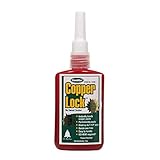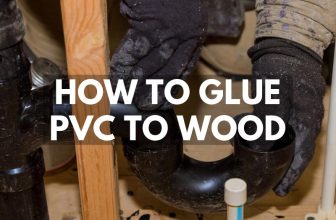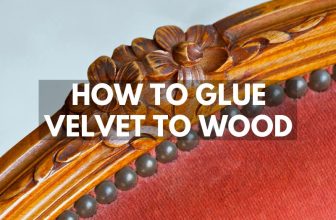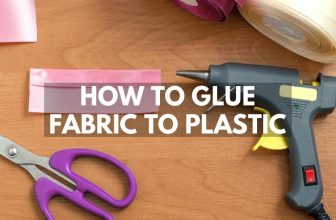
How to Glue Copper – Guide to Gluing Copper with Adhesives
Copper is surprisingly easy to bond using a variety of adhesives and sealants. Using an adhesive may even provide greater structural strength compared to soldering. However, not all adhesives provide the same results. Use this guide on how to glue copper to achieve a long-lasting bond for DIY projects, crafting, and copper pipes.
Choose the Right Type of Adhesive for Gluing Copper
The type of adhesive that you use depends on the project. Some adhesives offer superior resistance to impact while others are easy to apply and cure. The main types of adhesives include:
- Anaerobic adhesives
- Cyanoacrylate adhesives
- Structural acrylic adhesives
- Epoxy resins
Using an adhesive to bond copper to copper or other alloys is often called cold soldering. It typically involves applying an adhesive substance to copper pipe fittings to hermetically seal the pieces. Here are some details of the different glues you can use on copper:
Anaerobic Adhesives
Anaerobic adhesives are often used for thread-locking and thread-sealing pipe fittings. These types of adhesives cure without oxygen and react to the presence of metal. Anaerobic adhesive comes in liquid form and hardens when exposed to metal. As copper is a highly reactive alloy, anaerobic adhesives cure quickly.
While anaerobic adhesives are easy to apply and cure, they do not work well with other materials. Anaerobic adhesives work best on copper and brass but may not adhere well to ceramics, plastics, and painted or lacquered finishes.
Anaerobic adhesives also have limited resistance to prolonged exposure to high temperatures. Constant exposure to temperatures above 300-degrees Fahrenheit may cause the adhesive to degrade and the seal to weaken. It also has limited impact resistance and may crack under extreme pressure.
Cyanoacrylate Adhesives
Cyanoacrylate adhesives are suitable for bonding copper to copper or other materials. Cyanoacrylate glue is the industrial name for “super glue.” It can be used to bond almost anything, including most types of metal, plastic, and organic material.
As with anaerobic adhesives, super glue is easy to use and dries quickly. It also has limited strength and may not be ideal for industrial applications.
Structural Acrylic Adhesives
Anaerobic and cyanoacrylate adhesives are technically acrylic adhesives. However, structural acrylic adhesives are designed for industrial bonding applications.
Structural acrylic adhesives are used for projects that require increased tensile strength. These types of adhesives can support a structural load and provide increased resistance to impacts, vibrations, and high temperatures.
The most used types of structural acrylic adhesives include surface-activated acrylics and bead-on-bead acrylics.
Surface-activated acrylic adhesives involve the use of two substances – an initiator and a resin. The initiator is applied to one part and the resin is applied to the other part. After the two components join, the adhesives begin curing.
Using bead-on-bead acrylics involves a similar process. However, instead of applying an even coating of the substances, you apply small beads of adhesive on the parts that you want to join. The curing starts when the components are assembled.
Epoxy Resins
Along with acrylic adhesives, you may use epoxy resins to glue copper. The epoxy is mixed with a hardener and applied directly to the surface that you want to bond. The components are then assembled before the epoxy fully hardens.
Curing epoxy resin takes longer compared to using acrylic adhesives and requires a higher temperature, which may not be suitable for all applications. For example, you may not want to use epoxy resin to glue copper to plastic or ceramic.
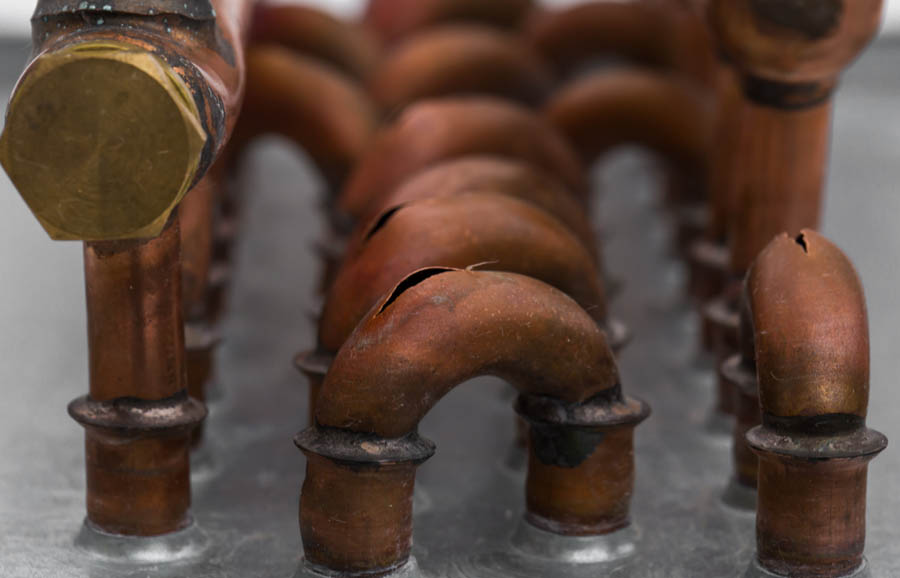
How to Apply Adhesive to Glue Copper
The application process depends on the type of adhesive and the material that you are bonding the copper to.
When bonding copper to copper with anaerobic adhesive, the liquid is applied to the entire surface of the fittings or threads. The adhesive should be applied to both parts when bonding large components.
The adhesive starts hardening within minutes at room temperature and fully cures within 24 hours. You do not need to apply heat. However, short-term exposure to high heat may speed the curing process.
Superglue (cyanoacrylate adhesive) should be applied to one of the parts that you plan on joining instead of applying it to both parts. Super glue is a little thicker compared to anaerobic adhesive, making it easy to apply too much of the adhesive.
As with anaerobic adhesive, super glue hardens in minutes and fully sets in less than 24 hours. Do not use short-term exposure to high heat to attempt to cure the adhesive faster. Super glue cures better at room temperature.
Structural adhesives and epoxy resins are applied in two parts. With surface-activated adhesives, a resin is applied to one of the parts that you want to bond. The initiator substance is applied to the other part. With bead-on-bead adhesives, small beads of resin are applied to both parts, which are then assembled.
Most epoxy resins require you to mix the epoxy with a hardener before application. The mixture is applied to the parts and starts curing immediately. With a single-component
epoxy resin, the epoxy is premixed and applied to both parts. The curing process is initiated by applying heat.
Additional Tips for Successfully Gluing Copper
Using clamps to secure the parts that you want to join can help ensure a better seal. Attach clamps immediately after applying the adhesive and assembling the parts. Keep the clamps in place until the adhesive is fully cured.
You may also want to clean up the excess adhesive. If you wait until after the adhesive cures, you may need to apply heat to soften the adhesive, which can weaken the bond. Use a scraper tool and a rag to remove the extra adhesive.
Always allow the adhesive to fully cure before using the bonded parts. For example, after using adhesive to bond copper pipe fittings, wait at least 24 hours before running water through the pipes.
Along with adhesive, some applications may require a sealant. Industrial sealants are used to completely seal two parts and are often applied using a standard caulk gun.
In the end, if achieving the highest structural strength is your main concern, use a structural acrylic adhesive to glue copper. If you need to glue copper to plastic, wood, or other material for a craft project, a few drops of superglue should work fine.



